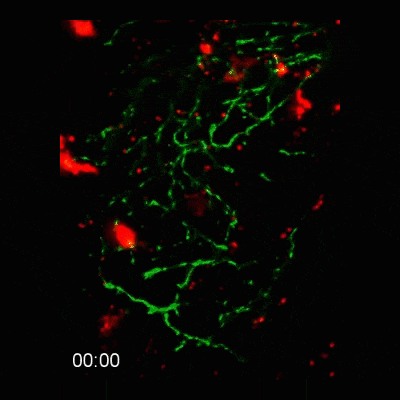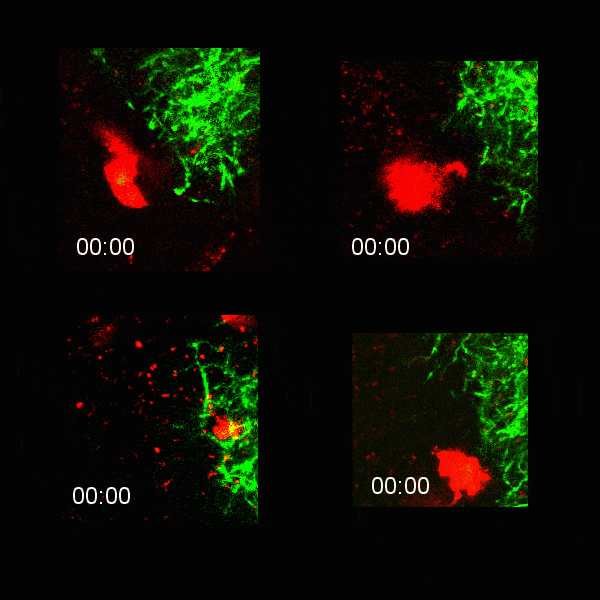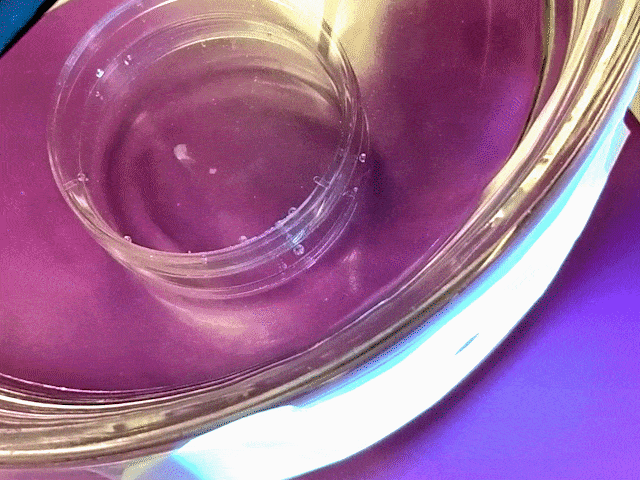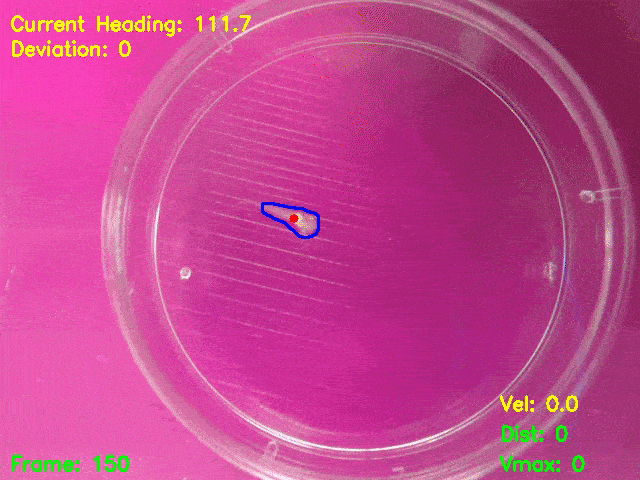Tony K.Y. Lim, Ph.D.

Tony K.Y. Lim, Ph.D.
Pharmacology, Neuroscience and Immunology

I am a scientist with a passion for pharmacology, neuroscience, and immunology. My goal is to discover more about disease mechanisms and to make new therapeutics for the treatment of neurological diseases.
I grew up in Vancouver, British Columbia where I gained a passion for pharmacology at the University of British Columbia. When I’m not working on science, you’ll find me tinkering with 3D printing, doling out treats to my canine companions or riding electric unicycles and skateboards.
Recently, I completed a CIHR-funded postdoctoral research project in the Ruthazer lab at McGill University, where I used 2-photon microscopy to record interactions between immune cells and neurons and computer vision-based techniques to study visual-evoked animal behaviour.
RESEARCH

I am fascinated by the immune system. In addition to playing essential roles in host defence, the immune system also regulates many processes in the peripheral and central nervous systems. Furthering our understanding of how the immune system contributes to peripheral and central nervous system function in health and disease will help us create new treatments for neurological disease.
Immune cells are highly mobile and dynamic, making them excellent subjects for time-lapse microscopy.

Microglial cells phagocytosing neurons (neurophagy) in the developing brain. Timestamp=HH:MM

Microglial cells (red) responding to a laser irradiation injury. Timestamp=HH:MM
In my postdoctoral work, I study neuron-microglia interactions and have shown that microglia phagocytose living axons, a process called trogocytosis. Microglial trogocytosis of axons is an important regulator of axon morphology.

Microglial cell (red) trogocytosing a pH-stable GFP-labelled axon (green). The colocalization of green and red is shown as white.

Microglial cell (red) trogocytosing a pH-stable GFP-labelled axon (green). The colocalization of green and red is shown as white.
EXPERTISE

-
2-photon intravital microscopy

Microglial cells (red) interacting with the neuropil (green) of the Xenopus laevis retinotectal circuit.

Microglial cells (red) extending processes to contact axons (green). Timestamp=HH:MM
-
3D volumetric data analysis

Left: Microglial cells (red) surveil the brain in the presence of an eGFP-labelled axon (green).
Right: Tracking of the microglial cells on the left panel in 3D.
-
Python programming and computer vision

Simultaneous presentation of looming stimuli and recording of behavioural responses using Python 3.

Automated tracking of a microglia-depleted tadpole making an escape response to bright looming stimuli.
Software available at https://github.com/tonykylim/XenLoom_beta
-
CAD design and 3D printing
During the COVID-19 pandemic, nasopharyngeal swabs were in short supply. I lead a team to design and develop a nasopharyngeal swab that could be made using low-cost FDM 3D printers, making it ideal for manufacturing in low resource settings.
Model available at https://3dprint.nih.gov/discover?terms=&uid=tonykylim
Learn more about this project at: https://www.helpfulengineering.org/projects-news/project-spotlight-open-source-3d-printed-nasopharyngeal-swab/
-
Bioinformatics

De novo protein modelling of a Xenopus laevis complement inhibitory molecule using the trRosetta structure prediction tool and pyMOL.
-
Molecular biology

Tagging of two proteins with fluorescent proteins for determining localization, and expression of both proteins in a single bicistronic plasmid construct.

Creation of a synapse-localized protein by fusion with a synaptic protein.
-
Immunohistochemistry

Iba1 staining of microglial cells in mouse spinal cord.

GFAP staining of astrocytes in mouse spinal cord.
-
In situ hybridization
_tif.png)
_tif.png)
_tif.png)
Left: Bacterial negative control probe in the retina of the Xenopus laevis tadpole retina.
Middle: Positive control probe of a housekeeping gene.
Right: Probe showing expression of a complement inhibitory molecule.
-
Proteomics

Left: Removal of high abundance proteins from human cerebrospinal fluid with immunodepletion before mass spectrometry-based analysis reveals low abundance proteins.
Right: Fractionation of human cerebrospinal fluid by acetonitrile precipitation concentrates low molecular weight proteins for analysis by mass spectrometry.
PUBLICATIONS

Peer-reviewed publications
Book chapters
AWARDS & FELLOWSHIPS

Awards
2018 Best Poster Award, EMBO Workshop: Microglia 2018
2015 1st Place Basic Science Poster Award, McGill Pain Day
2014 2nd Place Basic Science Poster Award, McGill Pain Day
2014 Oral Presentation Open Prize, McGill Anesthesia Research Day
2013 Poster Award, International Brain Barriers Society
2013 1st Place Oral Presentation, CIHR Neuroinflammation Training Program
2011 3rd Place Poster Presentation, CIHR Neuroinflammation Training Program
2011 Best Basic Science Poster Award, McGill Pain Day
2006 Esther R. Anderson Memorial Prize, UBC Department of Pharmacology
Fellowships
2017–2020
2016–2017
2012–2014
2009–2012
2006
CIHR Postdoctoral Fellowship
Role: Postdoctoral Fellow
McLaughlin McGill Faculty of Medicine Fellowship
Role: Postdoctoral Fellow
The Edwards Foundation PhD Studentship in Pain Research
Role: Doctoral Student
CIHR Frederick Banting and Charles Best Doctoral Fellowship
Role: Doctoral Student
McGill Graduate Studies Fellowship
Role: Master’s Student
PRESENTATIONS

Selected oral presentations
Lim TK, Ruthazer ES. “Microglial trogocytosis and the complement system regulate axonal pruning in vivo.” Canadian Neurophotonics Platform: Neuro Light Lunch Seminar Series, Virtual seminar, Jul 2020.
Lim TK, Ruthazer ES. “In vivo imaging of microglial-mediated synaptic pruning in the Xenopus laevis retinotectal circuit and modulation by the complement system.” Xenopus Gene Editing Workshop, Woods Hole, MA, Oct 2019.
Lim TK, Ruthazer ES. “In vivo imaging of microglial-mediated synaptic pruning in the developing retinotectal system.” Neuron-Glia Seminar Series, Montreal, Canada, Jun 2018.
Lim TK, Ruthazer ES. “Do microglia eat synapses? An investigation by 2-photon live imaging.” University of Tokyo seminar, Tokyo, Japan, Mar 2018.
Lim TK, Ruthazer ES. “Do microglia eat synapses? An investigation by 2-photon live imaging.” Kyoto University iCeMS seminar, Kyoto, Japan, Mar 2018.
Lim TK, Ruthazer ES. “Do microglia eat synapses? An investigation by 2-photon live imaging.” Osaka University Frontier Bioscience Seminar, Osaka, Japan, Mar 2018.
Lim TK, Ruthazer ES. “Do microglia eat synapses? Seeing is believing.” BRaIN Boost Symposium, Montreal, Canada, Feb 2018.
Lim TK, Shi XQ, Johnson J, Zhang J. “The role of hypoxia in the generation of neuropathic pain.” Anesthesia Research Day, Montreal, Canada, May 2014.
Lim TK, Shi XQ, Zhang J. “The vascular basis of neuropathic pain.” Quebec Network of Junior Pain Investigators, Montreal, Canada, Jul 2013.
Lim TK, Shi XQ, Zhang J. “The vascular basis of neuropathic pain.” Integrated Program in Neuroscience Retreat, Montreal, Canada, Jun 2013
Lim TK, Shi XQ, Zhang J. “A vascular hypothesis for neuropathic pain.” CIHR Neuroinflammation Training Program Symposium, Montreal, Canada, 2013.
RESEARCH EXPERIENCE

2016–2020
Postdoctoral Scholar
The role of microglial trogocytosis and the complement system in axonal pruning
The Montreal Neurological institute
Montreal, Canada
Lab of Dr Edward S. Ruthazer
-
Recorded direct real-time in vivo evidence of microglial-mediated axonal pruning in Xenopus laevis tadpoles using 2-photon microscopy
-
Identified an endogenous synapse-associated molecule that inhibits axonal pruning
-
Generated a synapse-associated fusion protein that enhances axonal pruning
-
Created a novel behavioural assay to test visuomotor function in Xenopus laevis tadpoles using python programming, 3D printing and a custom-coded computer vision tracking algorithm
A first-authored manuscript was published in eLife. Postdoctoral fellowships from CIHR and the McGill Faculty of Medicine funded this work.
2009–2015
Doctoral Student
Investigation of the role of the microvascular dysfunction in neuropathic pain
McGill University
Montreal, Canada
Lab of Dr Ji Zhang
-
Devised novel methods to measure peripheral nerve vascular function: endoneurial microvascular perfusion, hypoxia, blood-nerve barrier integrity, mitochondrial activity
-
Discovered 3 different mechanisms to target analgesics to injured peripheral nerve
This work resulted in four first-authored publications in the Journal of Neuroscience, Pain, and Molecular Pain. Doctoral fellowships from CIHR and the Edwards Foundation funded this work.
2007–2008
Master's Student
Uncovering pain biomarkers in the cerebrospinal fluid of patients with painful intervertebral disc degeneration
McGill University
Montreal, Canada
Lab of Dr Laura S. Stone
-
Uncovered pain biomarkers in human cerebrospinal fluid using proteomics
-
Uncovered biomarkers in the saliva of adults with self-injurious behaviour disorder
This work resulted in a first-authored publication in the Journal of Pain and a co-authored publication in the Journal of Developmental Disorders.
2006
Undergraduate Summer Research Project
Characterization of the local anesthetic properties of QX-314
University of British Columbia
Vancouver, Canada
Labs of Dr Bernard A. MacLeod & Stephan K.W. Schwarz
-
Established a novel mechanism to create long-lasting local anesthetics
This work resulted in the first-authored publication in Anesthesiology and was funded by a Faculty of Medicine Summer Student Research Program award.
2005-2006
Honour's Thesis Student
2005
Co-op Intern
2004
Co-op Intern
Summary of the discovery and development of RSD-921: From molecule to man
University of British Columbia
Vancouver, Canada
Lab of Dr Michael J.A. Walker
-
Summarized the discovery and development of RSD-921, a novel anti-arrhythmic.
Conventional and semi-high throughput electrophysiology of HCN ion channels
Johnson & Johnson Research & Development
La Jolla, San Diego, USA
Pain and Related Disorders Group
-
Performed conventional and high-throughput patch-clamp electrophysiology
Development of a clinically relevant rodent of allergic rhinitis
University of British Columbia
Vancouver, Canada
Supervisor: Michael J.A. Walker
-
Assisted in the development of a guinea pig model of allergic rhinitis for in vivo drug screening
EDUCATION

2009–2015
Doctor of Philosophy (PhD), Integrated Program in Neuroscience
2006–2008
Master of Science (MSc), Pharmacology & Therapeutics
2001–2006
Bachelor of Science (Hons),
Pharmacology & Therapeutics
McGill University
Thesis: The role of vascular dysfunction in neuropathic pain
McGill University
Thesis: Proteomic analysis of human cerebrospinal fluid from patients with painful and non-painful degenerative disc disease
The University of British Columbia
Thesis: A summary of the discovery and development of RSD-921, a novel anti-arrhythmic
TEACHING & MENTORING

Teaching
2019
Workshop: "Practical 3D printing for Life Scientists"
McGill University, Montreal Neurological Institute
-
Organized, created and presented a 3 hour workshop on 3D printing
Student supervision
2020
2014
2013
2012
2011
J. Ho (Undergraduate student, McGill University)
Currently: Undergraduate student
J. Jang (Undergraduate student, McGill University)
Currently: Clinical Trial Coordinator
J. Lou (Undergraduate student, University of Alberta)
Currently: PhD Candidate
J. Johnson (Undergraduate student, University of Alberta)
Currently: Pharmacist
H. Martin (Undergraduate student, Memorial University)
Currently: Medical doctor
SERVICE & OUTREACH

2020
2020
2017-2018
2017
2016
2007–2011
2010–2011
2010–2011
2008
2007–2009
2006–2007
2006
Canada Graduate Studies-Doctoral Awards Committee
Canadian Institutes for Health Research
Project Lead, Open Source 3D Printed Nasopharyngeal Swab for COVID-19
Helpful Engineering
Social Media Manager and Content Creator
Brain Reach North
Ad Hoc Reviewer
Journal of Pain
Ad Hoc Reviewer
Inflammation Research
Writer, Youth Articles
Let’s Talk Science
Institute Representative
McGill Graduate Student Association for Neuroscience
Coordinator, Montreal Brain Bee
Brain Bee Competition
High School Presenter
Brain Awareness Montreal
Committee Chair, Committee for Graduate Student Support
McGill Postgraduate Student Society
Social and Sports Representative
McGill Graduate Association of Pharmacology and Therapeutics
Class Act Representative
University of British Columbia Pharmacology Class of 2006